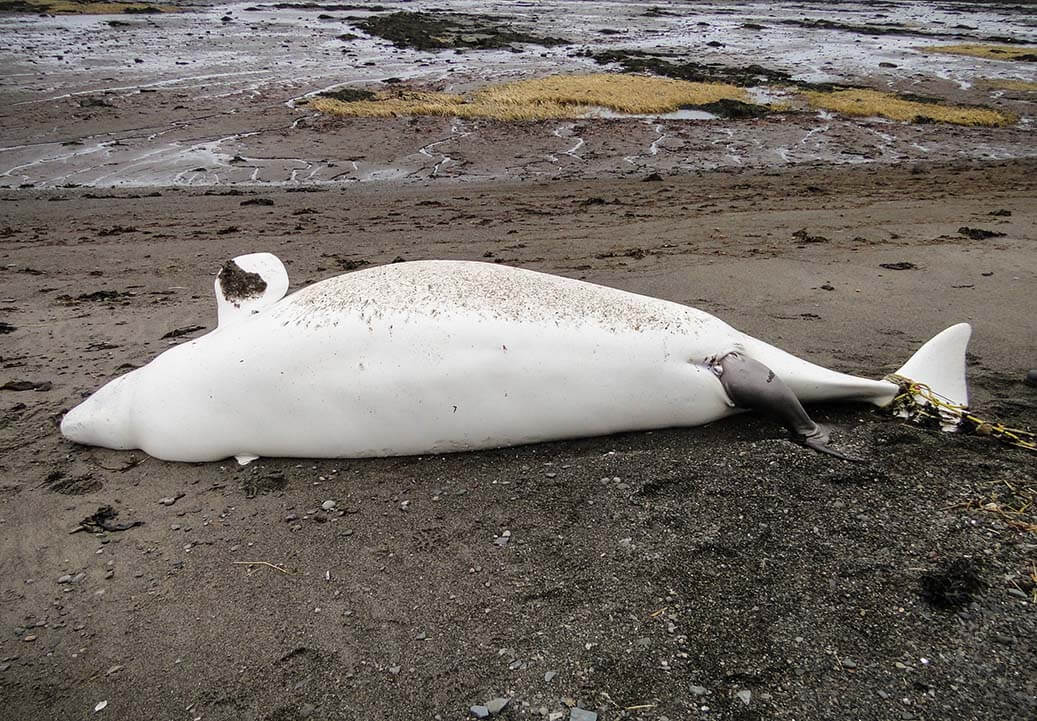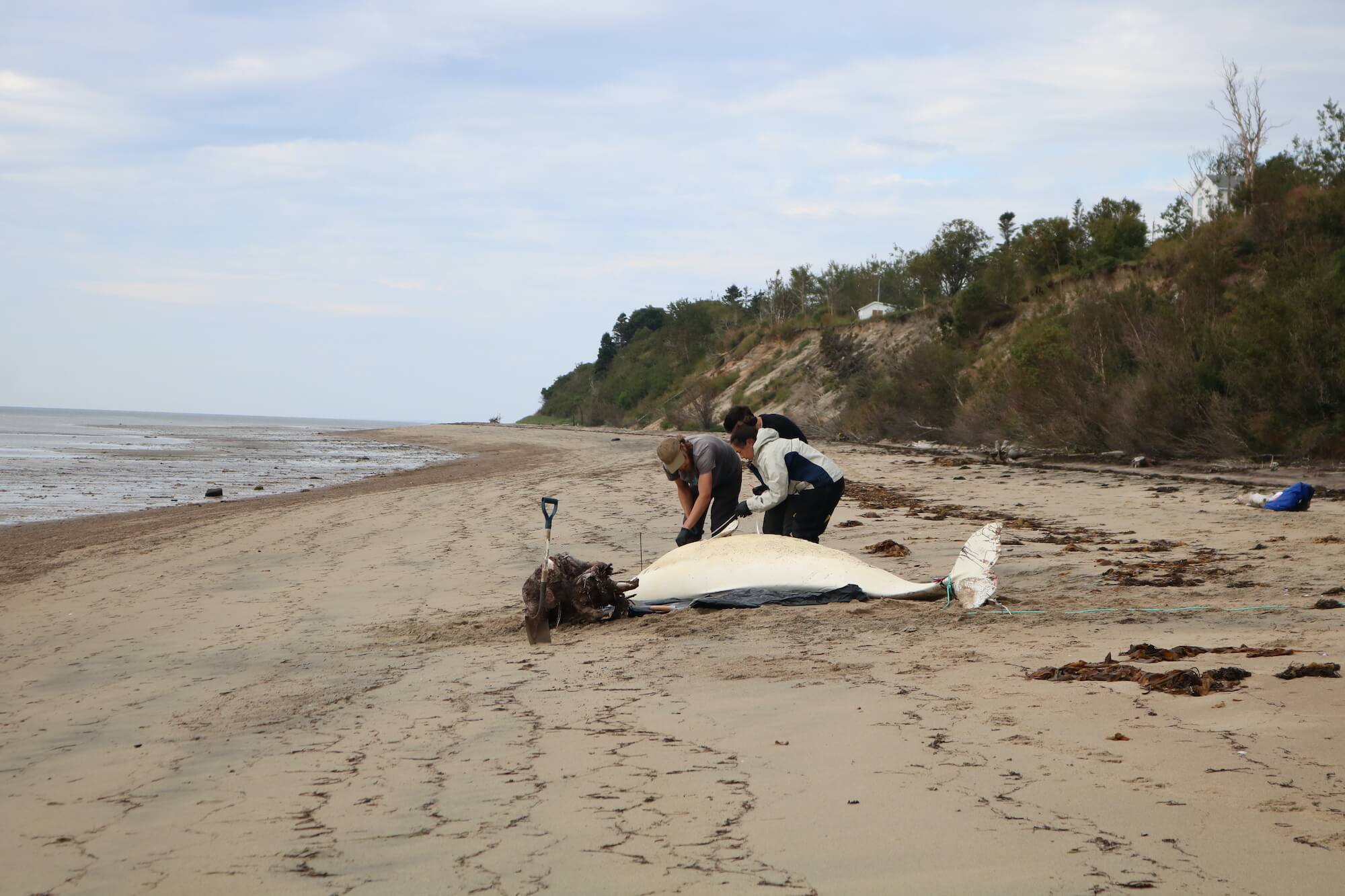A beluga carcass washed up in the Gaspé town of Les Méchins on August 6. The newborn beluga still had its umbilical cord. The carcass will be recovered and sent for analysis to Université de Montréal’s Faculty of Veterinary Medicine in Saint-Hyacinthe. “The loss of a newborn is always bad news for an endangered population. This young animal will not have a chance to contribute to the recovery of its species,” says Robert Michaud, GREMM president and scientific director and coordinator of the Quebec Marine Mammal Emergency Response Network.
Since the beginning of the year, twelve beluga carcasses have been found along the St. Lawrence. This number does not represent the actual number of deaths, but the number of carcasses discovered. Here is the chronology of these events:
March 28: beluga of undetermined sex found in Sainte-Luce
April 8: young female found in Baie-des-Sables
May 13: young male discovered in Rimouski
May 31: adult female found in Saint-Denis-de-la-Bouteillerie
June 1: adult of undetermined sex discovered in Havre-Saint-Pierre
June 16: adult of undetermined sex found in Sept-Îles
June 18: adult male found in Saint-Ulric
July 5: adult female beluga discovered in Sainte-Flavie. Identified as DL0584,. this individual died as a result of dystocia.
July 16: adult female discovered in Grosses-Roches
August 1: adult female found in Rivière-du-Loup
August 2: juvenile male discovered in Saint-Fabien
August 6: newborn found in Les Méchins
A beluga carcass was also found in Nova Scotia. For the time being, the population from which this animal originated remains unknown.
At first glance, this large number of strandings may seem worrisome for this endangered population. However, it is too early to know whether or not these figures are abnormal. “About fifteen carcasses are discovered annually. Before the season has come to an end, it’s difficult to draw any conclusions,” explains GREMM President and Scientific Director Robert Michaud. Monitoring mortalities in St. Lawrence belugas helps to better understand and in turn better protect this population.
In 2018, 12 St. Lawrence beluga carcasses were found. In 2017, 22 carcasses were found and in 2016, this figure was 14.
Why are so many carcasses found on the south shore of the St. Lawrence?
The place where a carcass washes ashore does not necessarily correspond to where the animal died. A number of environmental factors accumulate and push the majority of carcasses toward the river’s south shore, namely in the Bas-Saint-Laurent region and the start of the Gaspé Peninsula. These factors include the configuration and the currents of the St. Lawrence, the Coriolis force, and prevailing southwesterly winds.





